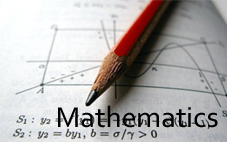 Mathematics is a creative and highly inter-connected discipline that has been developed over centuries, providing the solution to some of history’s most intriguing problems. It is essential to everyday life, critical to science, technology and engineering, and necessary for financial literacy and most forms of employment. A high-quality mathematics education therefore provides a foundation for understanding the world, the ability to reason mathematically, an appreciation of the beauty and power of mathematics, and a sense of enjoyment and curiosity about the subject.
Mathematics is a creative and highly inter-connected discipline that has been developed over centuries, providing the solution to some of history’s most intriguing problems. It is essential to everyday life, critical to science, technology and engineering, and necessary for financial literacy and most forms of employment. A high-quality mathematics education therefore provides a foundation for understanding the world, the ability to reason mathematically, an appreciation of the beauty and power of mathematics, and a sense of enjoyment and curiosity about the subject.
Aims
The national curriculum for mathematics aims to ensure that all pupils:
1. Become fluent in the fundamentals of mathematics, including through varied and frequent practice with increasingly complex problems over time, so that pupils develop conceptual understanding and the ability to recall and apply knowledge rapidly and accurately.
2. Reason mathematically by following a line of enquiry, conjecturing relationships and generalisations, and developing an argument, justification or proof using mathematical language.
3. Can solve problems by applying their mathematics to a variety of routine and non-routine problems with increasing sophistication, including breaking.
The principal focus of mathematics teaching in lower key stage 2 is to ensure that pupils become increasingly fluent with whole numbers and the four operations, including number facts and the concept of place value. This should ensure that pupils develop efficient written and mental methods and perform calculations accurately with increasingly large whole numbers.
At this stage, pupils should develop their ability to solve a range of problems, including with simple fractions and decimal place value. Teaching should also ensure that pupils draw with increasing accuracy and develop mathematical reasoning so they can analyse shapes and their properties, and confidently describe the relationships between them. It should ensure that they can use measuring instruments with accuracy and make connections between measure and number.
By the end of year 4, pupils should have memorised their multiplication tables up to and including the 12 multiplication table and show precision and fluency in their work.
Pupils should read and spell mathematical vocabulary correctly and confidently, using their growing word reading knowledge and their knowledge of spelling.
Content students will cover in each year:
Year 3 Year 5
1. Number – number and place value
2. Number – addition and substation
3. Number – multiplication and division
4. Number – Fractions
5. Measurement
6. Geometry – properties of shapes
7. Statistics1. Number – number and place value
2. Number – addition and subtraction
3. Number – multiplication and division
4. Number – fractions (including decimals and percentages)
5. Measurement
6. Geometry – properties of shapes
7. Geometry – position and direction
8. Statistics
Year 4 Year 6
1. Number – number and place value
2. Number – addition and subtraction
3. Number – multiplication and division
4. Number – fractions (including decimals)
5. Measurement
6. Geometry – properties of shapes
6. Geometry – position and direction
7. Statistics1. Number – number and place value
2. Number – addition, subtraction, multiplication and division
3. Number – fractions (including decimals and percentages)
4. Ratio and proportion
5. Algebra
6. Measurement
7. Geometry – properties of shapes
8. Geometry – position and direction
Statistics

